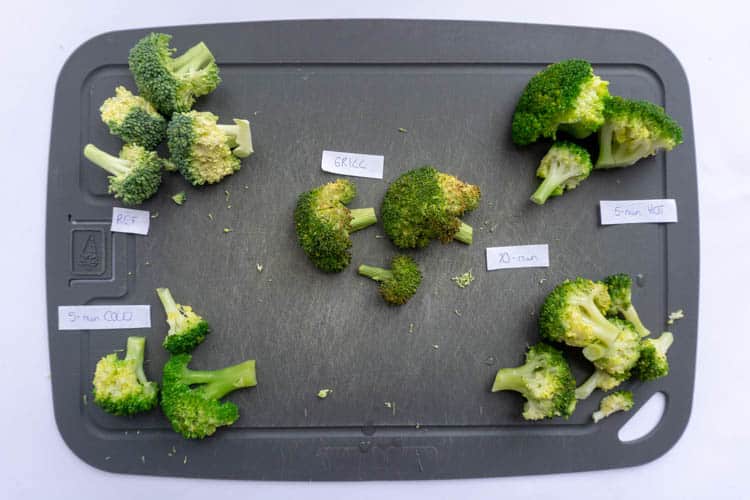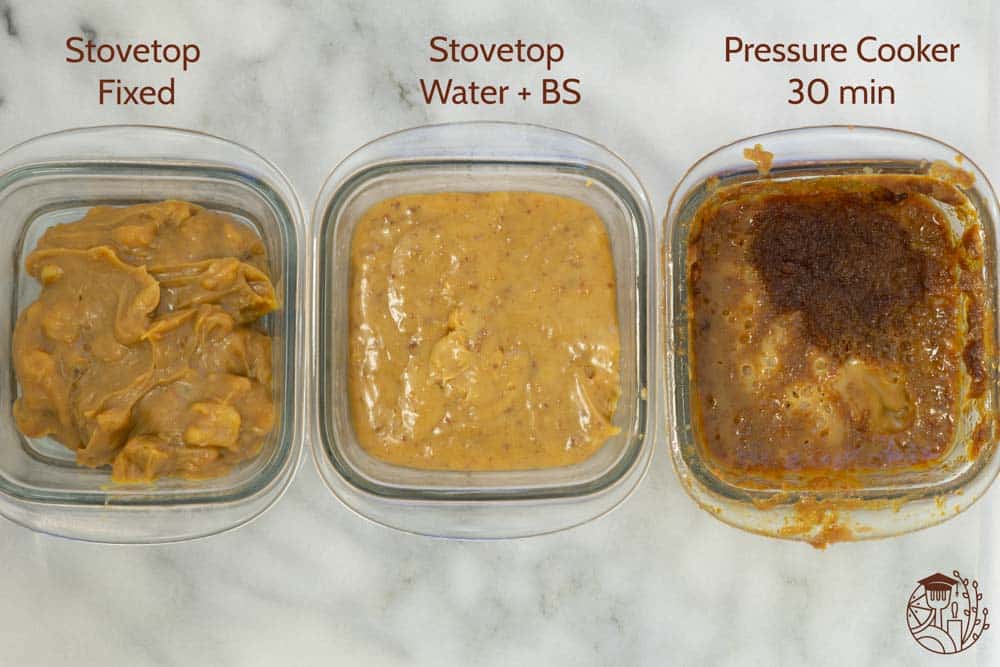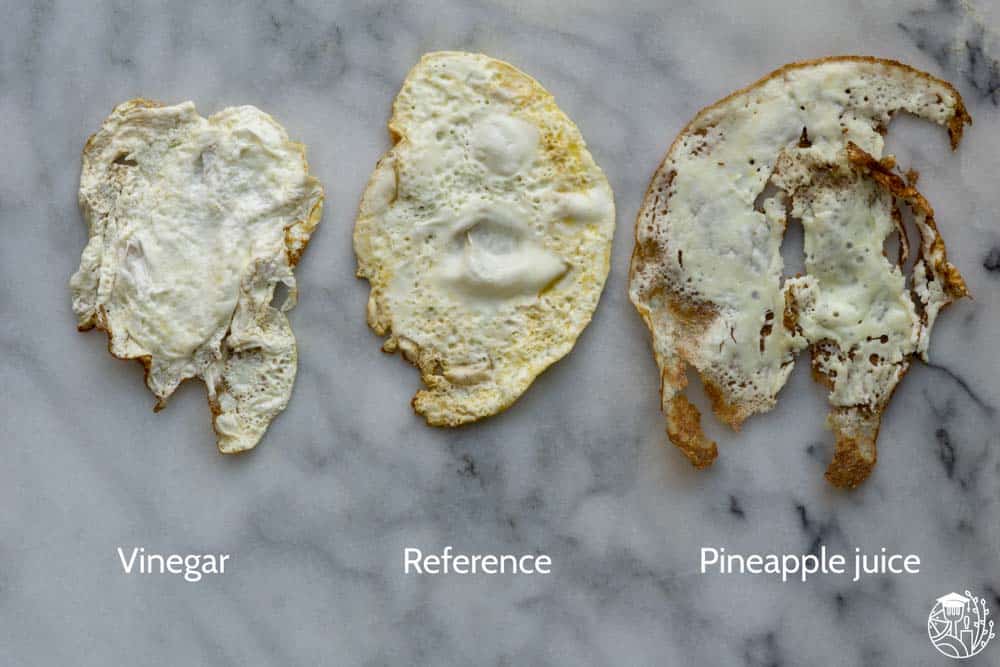Learn the science behind:
So, you’ve landed on a website dedicated to food science. But, you don’t know what food science is? Don’t worry. You’re not alone. A lot of people don’t know the field even exists.
Food science is all around you though. It’s the science behind the food (and drink) we consume on a daily basis. Food scientists know how these foods are (best) made, how to troubleshoot them, and how to make them in a healthy, efficient, and sustainable manner. Food scientists may think about things such as:
- Why does the green color of broccoli change during cooking? (It’s the chlorophyll!)
- How long can we store this carrot cake for? (It depends…)
- Why did your muffin expand and then collapse in the oven? (Probably the baking soda or baking powder.)
- What packaging should we use to store freshly roasted coffee beans? (One with a hole inside to release gases.)
- Why shouldn’t you store ripe fruits next to a bunch of bananas? (It’s ethylene at work!)
- How can I produce 1000 loaves of my home-style bread recipe? (Scaling up recipes is a challenge!)


What do food scientists do?
Food scientists experiment with food all the time. It’s the best way to understand how it works. Whether they’re trying a new oven setting, changing out ingredients in a recipe, or testing a new packaging material, it’s all about trying to understand food better. Doing experiments is key to being a good food scientist. Food scientists don’t do this just for the fun of it. They use all this knowledge to help in the food production process:
Food Science is (…) used to describe the application of scientific principles to create and maintain a wholesome food supply.
https://foodscience.ucdavis.edu/about/what-food-science
Develop New Products
Making tasty, stable, safe, healthy food is a challenge right up a food scientist’s alley! To develop new foods you need to be creative, but also understand how ingredients interact and know how to manufacture this at scale!
Product development isn’t just about creating new products, but also about improving current.

Determine shelf life
For food to be safe to eat, you need to define how long you can keep it. This is referred to as the shelf life of a product. Food scientists help figure out what this should be.
To do so, food scientists need to know how a food may spoil over time. Will it change flavor or color? Or will harmful microorganisms grow on it? Combining all that knowledge will result in a shelf life value.
Problem solve in factories
When things go wrong when making food, especially on a large scale, food scientists come in to troubleshoot!
Why did the caramel not turn brown? Why are the consistency and taste off? Once you understand the science of your food and its processes, you can start looking for answers.


Ensure Food Safety & Food Quality
We wouldn’t want people to become sick when eating food! Food scientists help ensure food is safe to eat. Knowing which microorganisms might be in a food, or which chemical contaminants can be a hazard is crucial here.
Aside from being safe, it should also remain tasty and appealing. Maintaining food quality is also a crucial aspect of a food scientist’s role.
Make large quantities
Making 1000 vs 1 liter of maple syrup requires different equipment and processes. This is where food scientists can come in, using their food engineering skills.
Some more refer to food scientists who specialize in this as food technologists.

Food Science is a multi-disciplinary field involving chemistry, biochemistry, nutrition, microbiology and engineering to give one the scientific knowledge to solve real problems associated with the many facets of the food system.
https://www.mcgill.ca/foodscience/what-food-science
Food Science Disciplines
Food science is a multi-disciplinary field. Physics, chemistry, engineering, nutrition, and more, they all come together in food science. Since food is quite complicated and since different components interact and interfer, you can’t look at one aspect while completing neglecting other parts. They all interact. Some of the most important fields within food science are:

Food Chemistry
Food is full of chemistry and this chemistry plays an important role when storing and preparing food. Food chemists study this extensively. They determine which molecules are present in food. They study their role and how they might react and change over time.
Some of the most important molecules in food are proteins, carbohydrates and fat, so those especially are studied extensively.
It’s a broad and fascinating field of applied chemistry.
Food Physics
You can also study the physics of foods! Food physicists may study how foods flow, break, stretch, squeeze, dissolve, and more. The impact of temperature and processes is very interesting for food physicists.
Foams, emulsions, gels, these are all studied by food physicists.


Food Microbiology
Microorganisms grow in and on our food. Molds, yeasts, and bacteria are all examples of microorganisms.
Sometimes, we want them to be there – there wouldn’t be cheese, beer, wine, and many breads, without microorganisms. Other times, we don’t since some can make us sick.
Food microbiologists study the microorganisms in our food. It’s a crucial field for being able to make safe and reliable food.
Food Engineering
Making 1 liter of apple cider, poses very different challenges than making 1000 liters of that same apple cider.
This is where the engineers come in. Scaling up food production in a safe, but also reliable manner is very important. On a large scale, cooling, heating, transporting, storing, etc. needs to be done in a different way than at a small scale.

And many more!
Every food scientist has a basic understanding of the chemistry, (micro)biology, physics, and engineering of our food. But it really starts to get interesting when you combine all these different fields. As such, there are many, many sub-fields within the world of food science. Just a few examples:

What about nutrition & health?
It’s common for people to think that food scientists are (also) dieticians and nutritionists. And whereas food scientists definitely know the basics of those fields, they’re not dieticians. So we can’t tell you what you should eat. But, we can tell you how what you eat was made, why it’s packaged the way it is, etc. 😄.
What about agriculture?
Whereas this website does contain a few articles on farming, it’s not the core business of a food scientist. Generally speaking, a food scientist’s job starts once the ingredients have been harvested.
An example: Science of the humble apple
So how does that look in real life? Let’s have a look at how all these different fields can come together in a humble apple:
- Why does an apple turn brown when you cut it? (enzymatic browning)
- How can you make apple cider out of apples? (using fermentation)
- Which apple is best suited for making an apple pie? (choosing the right apple plays a huge role!)
- How does apple butter spoil? (hint, microorganisms!)
- Why do apples turn soft when cooked (breaking down of cellular structures)?
- How best to store apples? (under a controlled atmosphere)
- What is the easiest way to prep apples for thousands of apple pies per day?
- How to store said apple pies?
- And so much more!



Why learn more about food science?
Everyone can learn more about the science of your food. If you work in food manufacturing, all the applications above are relevant. But also if you don’t work in food, there are plenty of good reasons to better understand how your food works!
- As a chef/cook:”I would like to understand my recipes better so I can improve them.”
- As a (science) teacher: “I would like to use everyday food to explain science.”
- As a student, (aspiring) scientist: “I’m hoping food will help me understand science.”
- As a chef/cook: “I would like to develop my own recipes & processes!”
- As a aspiring food entrepreneur: “I would like to scale up my food product.“
How to learn more about food science
There are several ways to get started:
- The first and easiest option: make food and do experiments with it (read our guide here).
- The second option: browse around the FoodCrumbles website to learn more about a wide range of topics.
- Or, take a short course that doesn’t break the bank. Our food science courses provide you with a more structured and in-depth approach to learning about your food. A good place to start it our free Introduction to Food Science course.
- Truly passionate about the field? Then you might want to consider studying food science at a college or university. There are many great programs out there!
Whichever route you take, hopefully, FoodCrumbles can help you out! If you have any questions, please feel free to reach out.


